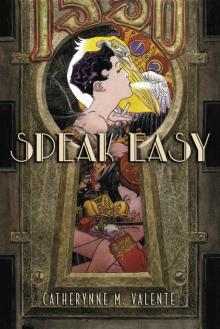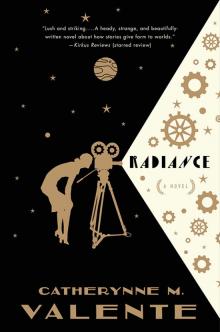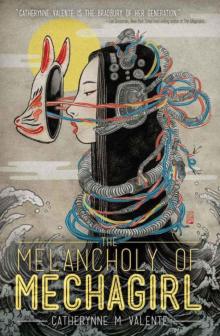


Inquisition
Green, Toby
Having paid attention to the evidence and merits of this case, we have grounds to suspect the prisoner, and so have found that we must condemn them to be put to the interrogation of torture, in which we order that the prisoner should spend as much time as we see fit, so that they should tell us the truth about the accusations made against them. And in addition we declare that if the prisoner should die or be injured or suffer heavy bleeding or have a limb mutilated during the torture, this will be their fault and responsibility and not ours, because they have refused to tell the truth.
Having thereby cleansed their consciences, the inquisitors would order the prisoner to be taken to the torture chamber. There they would be arraigned in the instrument of torture by the torturer, who would be disguised by a mask which showed only their eyes. Light was usually provided with lanterns, and the inquisitors sat in their chairs and prepared to interrogate. Again the prisoner was urged to tell the truth, and, said García, the inquisitors should remind them that they did not want to see such suffering, even though it was usually ‘necessary’ to proceed.
García ordered the inquisitors to pay particular attention to ensure that everything was recorded with scrupulous accuracy: ‘how the prisoner was stripped naked, and how his arms were tied and how the ropes were tied around him, and how he was ordered to be placed in the potro with his legs, head and arms tied, and how it was ordered that the garrottes should be put onto him and how they were tightened, stating whether to the leg, muscle, spine or arms, etcetera, and what was said to him at each of these stages . . . so that everything which happens will be written down without exception’.30
This attention to detail was in the eyes of the inquisitors an exercise in transparency before God, yet it also reveals an unmentionable truth: the minutiae of torture were to be written down with such lurid precision because the officials and perpetrators were themselves compelled by it. This was surely one of the reasons why the authorities sought to ensure that every aspect of each process of torture should be recorded. In a religion where the iconography of torture was apparent on a daily basis through images of the cross, fascination with pain could be exorcised through turning the iconography into reality.
It is disturbing to think how rapidly such horrendous proceedings became a part of ‘civilized’ society. One thinks back to the great auto of 1649 in Mexico City and the chronicler Bocanegra’s eulogy of the peaceful proceedings of Inquisitor Mañozca.*4 Bocanegra saw such goings-on as normal; after over 150 years of these events, they had come to seem so. Indeed, inquisitorial torture had long been a routine occurrence in Mexico. When Francisca de Carvajal, the niece of Álvaro de Leão of Mogadouro,*5 was ordered to the torture chamber in 1589, she cried out, ‘Kill me! Garrotte me as soon as you can. But don’t strip me naked, don’t affront me’. Then her wit got the better of her fear, and she added, ‘I’m an honest woman and widow, I can’t put up with this in the world, and not in a place where there is so much saintliness!’ The inquisitors of course ignored her, stripping her so that Carvajal tried to cover up her breasts. ‘Everything is wicked! Everything is wicked!’ she wailed. ‘This horror must count as remission for my sins.’31
Inquisitors were trained to be impervious to such appeals and in spite of Bocanegra’s views were clearly not men of peace. In torturing their prisoners to further their ideals and vanquish their perceived enemies, they revealed their own lack of humanity. The use of torture to secure the fantasy of a desired end became a mirror which society could hold up to itself, in order to grasp the extent of its growing disease.
The Canary Islands 1587
IN THE MID-ATLANTIC dust mountains reared out of the ocean to reveal a very different world to Europe. In the late 16th century the wild slopes of Tenerife’s volcano offered a lookout across the Atlantic. Below the mountain in the sky and its desert slopes the soil allowed fields of wheat, vines and sugar to grow. The sugar plantations were worked by Berber and Wolof slaves brought from the Sahara and Senegal, hacking at the canes with their machetes, piling up the stalks ready to be processed and then shipped back to Spain.
The Spanish had conquered the islands from the indigenous Guanche population between 1478 and 1496, with Tenerife the last to fall. By 1500 the Spanish way of life was established, if hardly decorous, in the Canaries. Prostitution was everywhere, and first Gran Canaria and then Tenerife decided to run brothels as public services, with the profits going back to the community.32 The atmosphere suited some; the chronicler Abreu Galindo recounted the story of Juan Camacho, who died on Lanzarote in 1591, reputedly at the age of 146. ‘I knew him and talked with him many times,’ wrote Galindo. ‘Even though so old he was not hunchbacked, but walked upright, and two years before he died he married a young woman of twenty and had a child with her.’33
By this time the Inquisition had long been established in the Canaries. Founded in 1504, as with the other Spanish tribunals its initial focus had been the conversos, and there had been eight relajados in 1526.34 By the time of Camacho’s dotage, however, a new enemy had appeared on the horizon, and the foreign threat was no longer provided by apostate Judaizers but by English Protestants. In 1587 matters came to a head, and several of them were thrown into the Inquisition’s jail on the island of La Palma.
Devout Catholics on the Canaries well knew the damage that Lutherans had done to their faith. As one witness to the trial of the Englishmen put it when asked if he knew what Lutherans were, ‘being a Lutheran involves not hearing Mass and stealing’;35 or, as an inquisitor put it to Hugh Wingfield, from Rotherham, when interrogating him in October 1592, ‘the church in England is not a church but the devil’s synagogue’.36 And, it was true, the Catholics of the islands had been subjected to sore provocation by one of the prisoners, John Smith from Bristol, who had said that ‘it would be better if the friars married rather than going with one woman today and then another tomorrow’.37
Smith had been arrested by the Inquisition together with John Gold, Michael James and John Ware. The men claimed to have been on a fishing expedition off the African coast when their ship had been captured by French pirates and they had been set adrift in a skiff. They had made for the Canaries and, on nearing Fuerteventura, had been attacked again by the French and dumped on the island with nothing but the clothes on their backs.38
Gold also came from Bristol, while James came from Cornwall and Ware from Swanage. Their arrests came as the tensions between Phillip II of Spain and Queen Elizabeth of England were about to reach their height, just a year before the Armada was dispatched. The inquisitors clearly smelt blood, so although Ware confessed that he had stopped eating meat during Lent not because he thought it was holy but because he had been ordered to by the Queen, he was sentenced to torture. He had not told the whole truth, and needed to purge his evidence.39
Ware was clearly someone whose Protestant faith did not extend as far as the potro. Once in the torture chamber, with his arms tied and the torturer looming, he began to talk. In fact, he admitted, it was the justice and compassion of the Holy Office which had encouraged him to return to being a proper Christian; only after being thrown into prison by the Inquisition had he seen the light and returned to the Holy Mother Church! He begged forgiveness, and admitted that he had not told the truth because the devil had tricked him. The inquisitors decided not to torture him, but instead sentenced him to be a galley slave – which was often tantamount to a death sentence. Ware managed to escape and his effigy was burnt in an auto on 1 May 1591.40
Ware’s reaction to the threat of torture was not uncommon. Faced with the almost unimaginable physical pain which the inquisitors could inflict, many people invented their evidence. Faced with the remarkable coincidence that people under torture suddenly started to confess and denounce others,41 inquisitors did not conclude that their victims were frequently terrified into lying and providing useless and/or misleading evidence. On the contrary, they were seen as people who until now had hidden the truth – a somewhat elastic concept that bore
an uncanny relationship to the predilections of the interrogator.
The dogma of torture was therefore simple and irrefutable: the inquisitors knew what the truth was, and they would carry on until it was revealed. So even though inquisitors were repeatedly confronted with evidence that torture had precisely the opposite effect of its aim, promoting lies and not truth, they ignored this. Belatedly, in 1774 the Portuguese Inquisition’s final code of practice (regimento) would recognize that ‘torture is a most cruel manner of investigating crimes, entirely foreign to the pious and merciful sentiments of the Mother Church, the surest way of punishing a weak innocent and saving a stubborn malefactor, and for extorting lies from both of them’.42
For much of the period prior to this realization, those who pointed out the evils or shortcomings of torture were themselves accused of heresy. Thus in Portugal in 1605 Alejandre de Abrinhosa was denounced by Francisco Rodrigues, a prior, for claiming that almost all those taken by the Inquisition in Lisbon were innocent, and that ‘of 150 prisoners only five were not Christians’. Abrinhosa had himself been a prisoner of the tribunal, and said that it was well known that proof of heresy was secured by torture. Even very young girls were tortured, and Abrinhosa said that he had been jailed near the torture chamber and had heard ‘the cruelty with which the torture was given and the confessions and cries of those being tortured and the scandalous mockery which the priests and inquisitors directed at their victims’. Those being tortured simply denounced anyone who came to mind, he said, ‘just to be free of the torture and so that they would not be tortured again’. One prisoner had asked another who Muhammad was, just so that she could confess to believing in him, having heard that this was a standard accusation of the torturers.43
This sort of revelation was of course far from welcome. But what really angered Prior Rodrigues about Abrinhosa’s views was perhaps something else. When Rodrigues said to Abrinhosa that the priest Francisco Pereira had told him, with what one can surmise was a straight face, how much rectitude, justice, legitimacy and charity was involved in the process of torture, Abrinhosa had replied, ‘That priest!’ wishing to libel him and imply that the ministers of the Holy Office proceeded with passion and hatred.44
Few perhaps could afford to acknowledge the psychological drives which impelled the torturers to inflict pain on others in their search to spread peace. Such realities did not belong within the grand beneficent project in which the empires of Portugal and Spain were said to be engaged. They were too close to the bone.
The real effects of the inquisitors’ procedures is apparent in many trials. In Cartagena, Colombia, Antonio Rodrigues Ferrerín was put in the potro in 1635, and ‘the rope was tied and as the first turn of the rope was made around his leg he fainted and gave off a cold sweat and said nothing more, and even when the rope was tightened he did not complain or answer and the torture had to be suspended’.45 In 1639 in Lima, Peru, Juan de Azevedo came sobbing to the inquisitors during the trial of Manuel Bautista Pérez to admit that ‘he did not have the courage or strength to withstand the torture and so he had told a lot of lies in the torture chamber . . . and if he was returned to the torture chamber he would tell more lies because of his weakness and despair’.46
The cases of victims such as Azevedo and Ferrerín show that the actions of the inquisitors went far beyond the sphere of spirituality into the realm of collective fear. Indeed, while the ‘evidence’ collected by the inquisitors through torture was deeply flawed, this mattered far less to the authorities than the development of such fear. Even in the second half of the 17th century, when the use of torture by the Inquisition declined considerably, this was not the public perception; by then, as we shall see, an attitude of fearful deference had successfully been implanted.
Fear is of course a wonderful tool for consolidating the power of an increasingly authoritarian state. Successfully embedded, this fear can always be invoked, in the name of the war of good against evil, against targets that pose an economic or political challenge.
AS THE INQUISITION would discover, inventing enemies was the easy part; it was resolving the problems which arose afterwards that proved impossible. People who had been loyal Catholics became enemies of the Church after their incarceration in inquisitorial cells, as Isabel Lopes, a prisoner of the Inquisition of Évora, made clear in 1594: ‘My husband and I are innocent,’ she told the priest Manoel Luis. ‘We never were Jews but we confessed that we were under torture and the threat of death . . . some people come into these cells as Christians and when they leave they are Jews, and all because of the lies and torture which the inquisitors have subjected them to.’47
The Inquisition was securing the exact opposite of its intention: instead of reconciling apostates to the Church, it was turning loyal Catholics into apostates. And if anything was likely to transform loyal citizens of a state into rebels who sought the destabilization of its government, it was the legal process of the persecuting institution. For here was a system of justice in which truth came a poor third to prejudice and power.
This legal process had first been set out by the Aragonese inquisitor Nicolás de Eymeric in the 14th century. In his handbook for inquisitors Eymeric had noted how inquisitorial judges were privileged ‘as they are not obliged to follow the judicial order, and so the omission of a legal formality does not render the procedure illegitimate’.48 In other words, the procedure was at the whim of the inquisitor.
The handbook continued in the same vein. The evidence of those convicted of heresy was only accepted if they accused someone, not if they testified in their favour, since ‘when a heretic declares in favour of the accused, it can be supposed that he does it out of hatred for the Church . . . but this presumption disappears when the same heretic declares against the accused’.49 Relatives, servants, children and spouses were only accepted if they denounced the accused, not if they spoke in their favour.50 The general attitude towards the prisoner was summed up by Eymeric’s view that death in the torture chamber was a form of spiteful sorcery designed to frustrate the inquisitor: ‘not even torture is a safe way of getting at the truth . . . there are some who, through their sorcery, will become almost insensible and would die rather than confess’.51
Although these astonishing guidelines was modified somewhat by the Instrucciones decreed by Tomás de Torquemada in 1484 as a code of practice for the Spanish Inquisition, they were key in the shaping of his ordinances.52 To begin with, prisoners of the Inquisition were not actually told what the evidence was against them, nor who had accused them. Instead, at their first hearing they would be asked who their parents and grandparents were, and then whether they had any personal enemies who might have denounced them maliciously. This was often an especially harrowing part of a trial, with the defendant desperate to cast doubt on the evidence of anyone who might have accused them, and reeling off lists of names of people who were said to be their ‘deadly enemies’. Many of these people were probably not enemies at all, but family members, friends or acquaintances who the prisoner suspected of being in the same situation as them.
So, at his trial in Cartagena in 1637, Luis Fernández Suarez accused ten people of being his personal enemies, only for witnesses to come forward soon afterwards to say that until his arrest Fernandez Suarez had been business partners with many of them.53 Arrested at the same time, Luis Gómez Barreto claimed to have several enemies; with one he had disputed over a shipment of slaves to Panama in 1627, and to another he had had problems repaying a debt.54 Later, in the torture chamber and with the ropes twisting around them in the potro, prisoners would cry out that this or that person was the enemy of their uncle or father-in-law;55 that another person owed them a great sum and wanted to see them ruined.
It was the anonymity of accusers which fomented such an atmosphere of suspicion. As we have already seen, the Aragonese saw the new judicial practice of the Inquisition as excessive, and not knowing the identity of witnesses in particular troubled them.*6 Indeed as late as 1521 the Aragonese w
ere still demanding the publication of names of witnesses, even though such demands had been routinely ignored.56 As the historian Juan de Mariana put it in his history of Spain, written in 1592, ‘In the beginning [the Inquisition] appeared very onerous to the [Spaniards]. What amazed them above all was that the children paid for the sins of the parents, and that the accused did not know and were not told who had accused them, that the accuser was not confronted with the prisoner and that there was never publication of the witnesses. All of this was to the contrary of what had formerly been done in the other courts’.57
Again, one is struck by how inquisitorial excesses did not seem normal and were not acceptable by the standards of the times, at first. The judicial practice of the new Inquisition was initially seen as a gross violation of ordinary legal proceedings. However, defenders such as Mariana argued that society had to change according to the demands of the time.58 Once people believed themselves to be surrounded by enemies, they would acquiesce in the use of extraordinary methods of interrogation.
The anonymity of witnesses was of course carte blanche for the venting of jealousy and vendettas. It also meant that the Inquisition could not be held to account for the justice of its actions. Unsurprisingly, the principle of secrecy was jealously guarded, and those who violated it were severely punished. In Murcia in 1563 Gregorio Ardid was sentenced to be a galley slave for six years and given 100 lashes for breaking the secrecy of the Inquisition, and Cristóbal de Arnedo was given 200 lashes and sent to the galleys for eight years for the same offence.59 Yet at the same time officials of the Inquisition were quite capable of acting with supreme hypocrisy by letting it be known when a certain person was about to be arrested, if it suited them.60 They were keen for others to be troubled by scruples. They tested victims, and were prepared to torture them, to ensure that they reacted appropriately. Yet such rules did not design for them their own moral canvass in life.














